20+ SAMPLE Continuous Improvement Plan
-
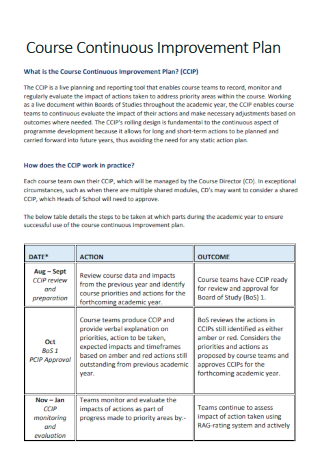
Course Continuous Improvement Plan
download now -
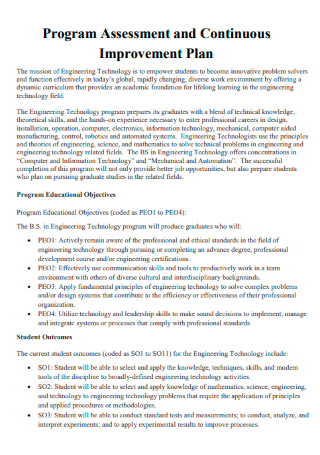
Program Assessment and Continuous Improvement Plan
download now -
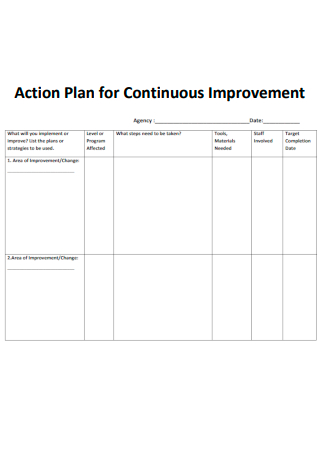
Action Plan for Continuous Improvement
download now -
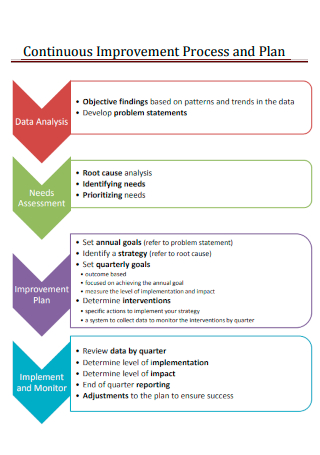
Continuous Improvement Process and Plan
download now -
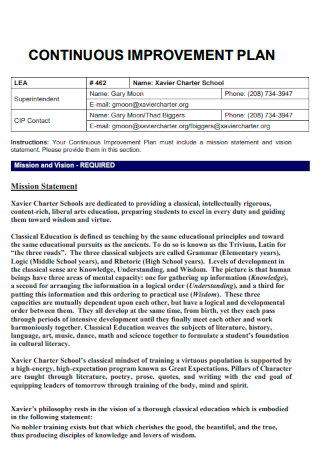
Sample Continuous Improvement Plan
download now -
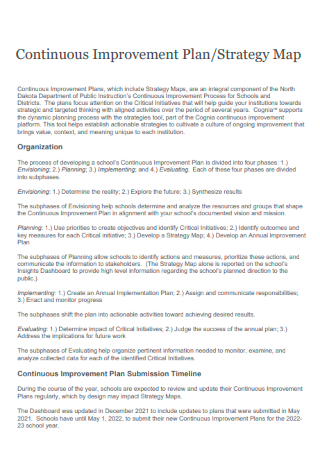
Continuous Improvement Plan & Strategy Map
download now -
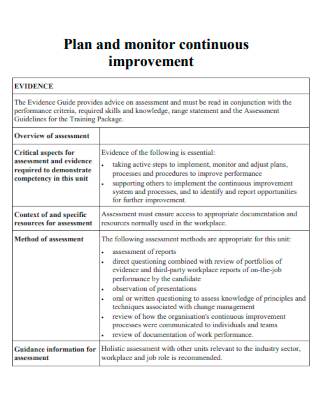
Plan and Monitor Continuous Improvement
download now -
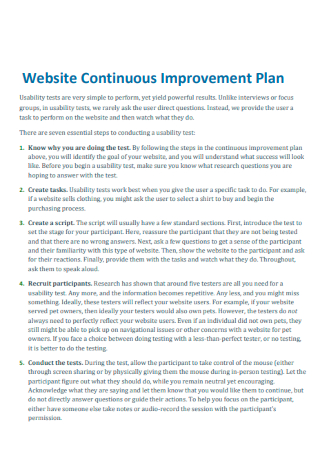
Website Continuous Improvement Plan
download now -
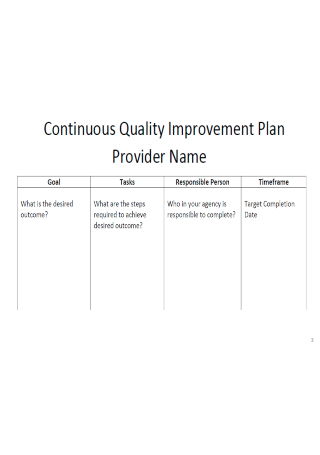
Continuous Quality Improvement Plan
download now -
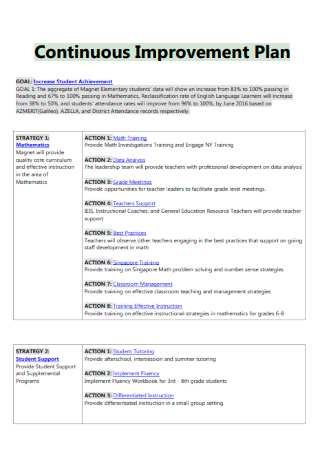
Basic Continuous Improvement Plan
download now -

Category Eight Planning Continuous Improvement
download now -
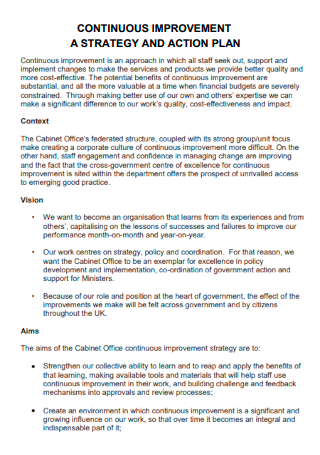
Continuous Improvement Strategy and Action Plan
download now -
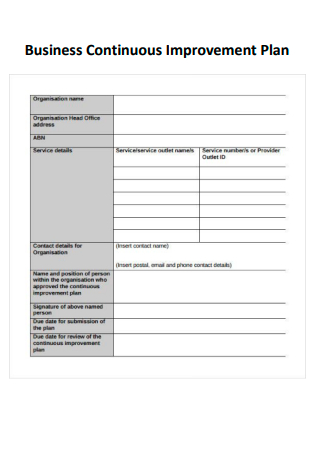
Business Continuous Improvement Plan
download now -
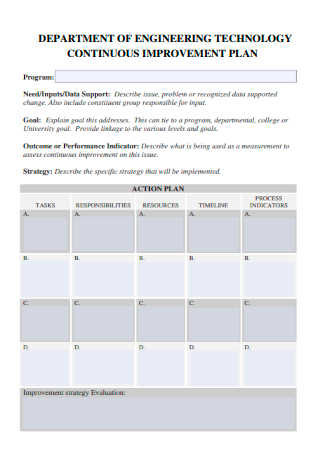
Department of Engineering Technology Continuous Improvement Plan
download now -

Formal Continuous Improvement Plan
download now -
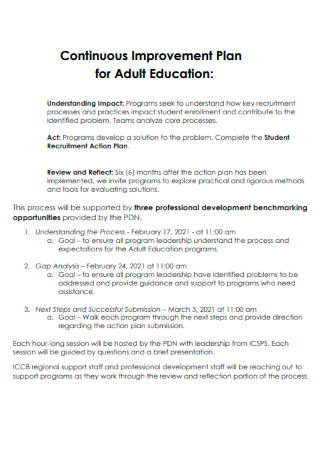
Continuous Improvement Plan for Adult Education
download now -
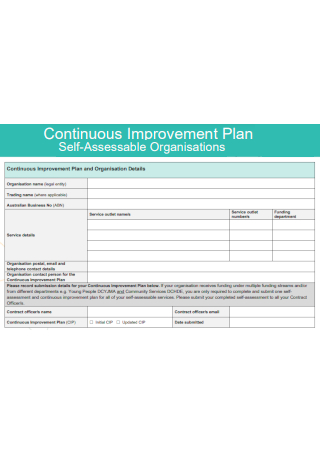
Continuous Improvement Plan Self Assessable Organisations
download now -
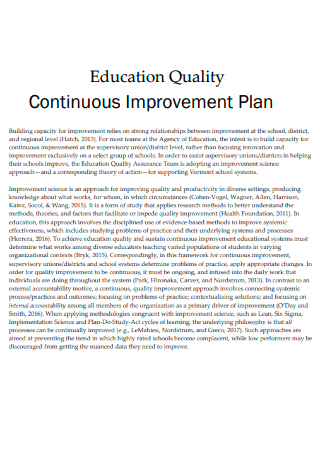
Education Quality and Continuous Improvement Plan
download now -
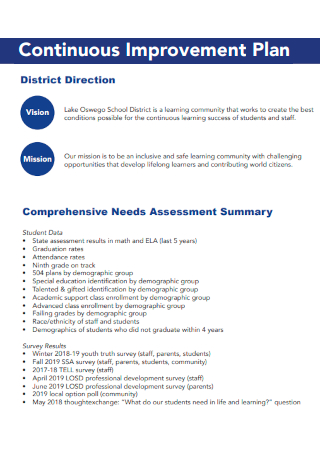
Printable Continuous Improvement Plan
download now -
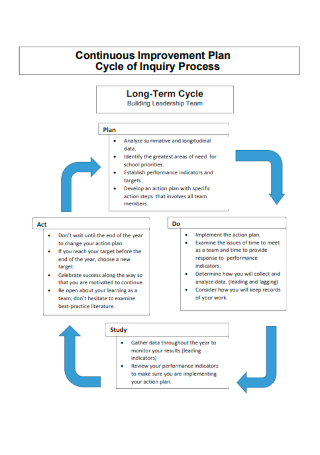
Continuous Improvement Plan Cycle of Inquiry Process
download now -
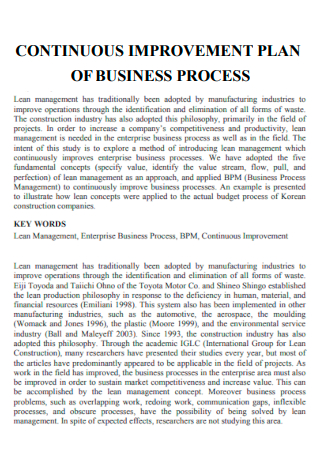
Continuous Improvement Plan of Business Process
download now
FREE Continuous Improvement Plan s to Download
20+ SAMPLE Continuous Improvement Plan
a Continuous Improvement Plan?
Continuous Improvement
Types of Continuous Improvement
How To Develop a Continuous Improvement Plan
FAQs
What is an example of continuous improvement?
What is the goal of a policy for continuous improvement?
What are the fundamentals of continuous process improvement?
What Is a Continuous Improvement Plan?
When looking at both new products, services, or businesses and small, incremental changes, we see how continuous improvement plays a vital role in innovation. So, if we take a step back, we can see that constant improvement contributes to the success of both small and significant changes. As you can see, continuous improvement is a big part of innovation. Even so, for this article, it’s still helpful to briefly explain what we mean by “continuous improvement.” Continuous improvement is a decision to invest and focus on getting better repeatedly. Continuous improvement in a business setting is the ongoing process of making products, services, or processes better. Statistics show that when a company invests in development, it produces 11% more money and keeps twice as many employees.
Benefits of Continuous Improvement
As your company navigates the realm of continuous improvement, it is always beneficial to emphasize the advantages of this business management approach. While you can focus on presenting the specifics of value, as described in this section, some public benefits can be brought up in any discussion regarding enhancement. Whether it is the financial case for embracing continuous improvement or motivating your project teams and the broader organization, here are ten benefits you must be aware of as a business improvement leader.
Types of Continuous Improvement
Now that you understand continuous process improvement, it will be helpful to explore how the theory is implemented in a business context. Here is where you can implement continuous process improvement in your daily routines.
1. Ideation and Think Tanks
Regular think tanks and brainstorming sessions might be beneficial for your organization. You can run think tanks with an objective in mind, or at the absolute least, ensure that essential people are present so that worthwhile ideas are debated. During these meetings, you can describe how processes are currently being carried out to determine whether areas need to be enhanced or changed. Since technology is entwined with most business operations, it is common to begin by discussing updates and new optimization-oriented technology solutions. For instance, automation solutions are becoming increasingly crucial for organizations to maintain competitiveness.
2. Surveys and Polls
Your organization’s employees are the best equipped to identify potential areas for improvement. Not only is it crucial to obtain feedback from customers and vendors, but employee feedback is also essential and often disregarded. By surveying your employees, you can determine their pain points and identify improvement opportunities. As a business leader, you spend most of your time focusing on the big picture. Therefore, the minor elements that have a massive impact on your company’s output may go overlooked.
3. Monthly Training
Especially in large organizations, it is customary for each person to function within a silo or “swim lane.” However, both cross-training and software automation can contribute to process enhancement. For instance, if you can teach staff to perform several tasks, a process will not be affected if an employee is away due to illness or vacation. Implementing an automated solution within your organization is another option for reducing reliance on critical employees. In addition to storing and automatically executing the process, the system also records the output-generating steps as the process proceeds.
4. Time Audits
Time is one of the essential resources lost by businesses. The ability to correctly measure and estimate how much time a process takes for your staff can provide insight into where a process can be optimized. Utilizing the software is all that is required to time a function. Then, you may analyze the duration of procedures and identify strategies to decrease time wastage. This might be accomplished by automating approvals and minimizing the number of touchpoints, thus preventing potential bottlenecks and delays.
5. Catchball
In organizations, processes are infrequently initiated and completed by a single individual. As a result, every function must have a person accountable for its execution while still requiring the input and help of several individuals. Catchball is a process of continuous improvement that demands the initiator of a strategy to communicate its objective and concerns to the other participants straightforwardly. In this approach, they can “throw it out” to the group for feedback and suggestions on enhancing it, but the sole individual remains responsible for its completion.
How To Develop a Continuous Improvement Plan
Continued improvement is a matter of common sense, and planning for it should not be overly complicated. An excellent continuous improvement strategy must possess three primary characteristics: straightforward, strategic, and operational. Let’s go through a few fundamental steps that will get you started with a continuous improvement strategy or help you improve an existing one.
1. Analyze the current situation
In this initial phase, you may wish to begin by gathering information that identifies the current processes, products, services, or whatever you are working on’s strengths, flaws, opportunities, and bottlenecks.
2. Plan the desired results
You are aware of your location. But where do you want to go? The following stage involves mapping the business’s integrated goals and objectives. This stage will also assist you in identifying the gaps between the existing condition and the desired outcome. Things may sound too abstract, but it is best to keep things simple and not overcomplicate them at this early stage of planning. In addition, because there are so many factors involved in continuous improvement, each firm will take a unique approach to specific operations.
3. Plan the improvement path
After completing these initial two phases, you may begin to map out your growth journey. This stage discusses how these deficiencies can be addressed by specific measures contributing to long-term gains and fostering a culture that supports them. Now is the time to focus on specifics, such as knowing when you’ve accomplished your objectives and how you’ll assess success. Consider establishing roles and a timeline as well.
4. Implement, test and scale
Again, this stage will vary significantly from organization to organization, but the broad principles can be used almost universally. To implement your plan, you must first include employees at all organizational levels. The continuous improvement standards, methods, and best practices must be understood by all stakeholders, from senior managers to frontline personnel. In addition, managers require extensive expertise to manage change and complex processes. To achieve this, the dedication and participation of senior leaders are essential. They are necessary for modifying, sustaining, and scaling continuous improvement.
FAQs
What is an example of continuous improvement?
Cross-training people to operate in various professions improves workplace safety, enabling a more efficient operation. Having trained employees who can step in when someone calls in ill or takes a leave of absence prevents a halt in output.
What is the goal of a policy for continuous improvement?
This policy governs the design and delivery of services and ensures that the organization maintains high standards, enhances systems and processes, adapts to changing demands, and exhibits organizational improvement.
What are the fundamentals of continuous process improvement?
The fundamental methods for continuous process improvement include transformation planning, small-scale change implementation, data analysis, and large-scale change implementation.
There are numerous considerations while developing an ideation procedure. It is essential to remember not to get bogged down in planning but to take action. If you find yourself buried in the details, pause, take a step back, and consider how you can maintain a clear focus that enables decision-makers to act. Even though new software’s early hype and excitement will gradually fade, you should continue introducing relevant improvements, no matter how small or uninteresting they may appear. Over time, these incremental increases add up to more significant gains. Each time you rush into something new, you lose concentration and do not achieve long-term success. This level of dedication will also help change the culture. Building a culture of continual development requires time and work, but you will achieve your goals with patience and perseverance.
